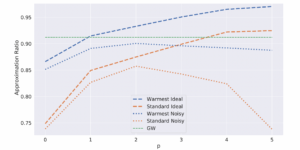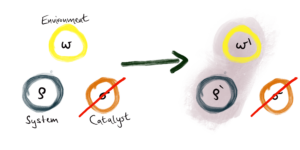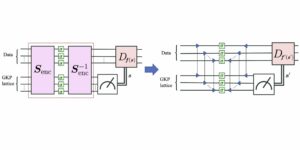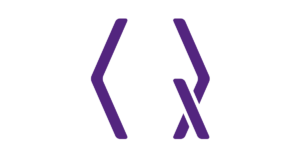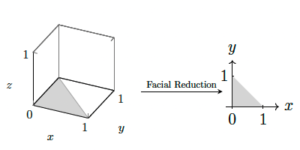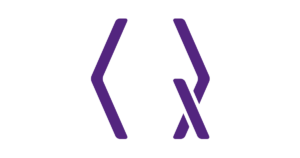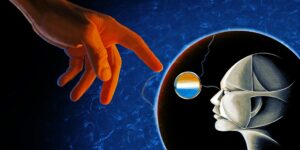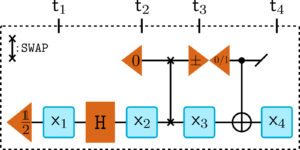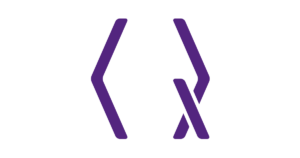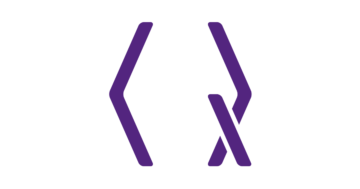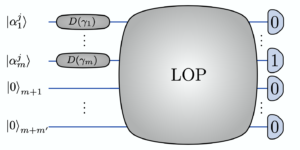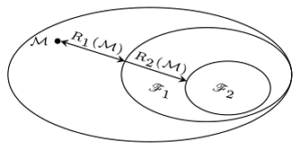1Department of Physical Chemistry, University of the Basque Country UPV/EHU, Apartado 644, 48080 Bilbao, Spain
2EHU Quantum Center, University of the Basque Country UPV/EHU
3Basque Center for Applied Mathematics (BCAM), Alameda de Mazarredo 14, 48009 Bilbao, Basque Country, Spain
4IKERBASQUE, Basque Foundation for Science, Plaza Euskadi 5, 48009 Bilbao, Spain
Find this paper interesting or want to discuss? Scite or leave a comment on SciRate.
Abstract
Open-air microwave quantum communication and metrology protocols must be able to transfer quantum resources from a cryostat, where they are created, to an environment dominated by thermal noise. Indeed, the states carrying such quantum resources are generated in a cryostat characterized by a temperature $T_text{in} simeq 50 $ mK and an intrinsic impedance $Z_text{in} = 50 , Omega$. Then, an antenna-like device is required to transfer them with minimal losses into open air, characterized by an intrinsic impedance of $Z_text{out} = 377 , Omega$ and a temperature $T_text{out} simeq 300$ K. This device accomplishes a smooth impedance matching between the cryostat and the open air. Here, we study the transmission of two-mode squeezed thermal states, developing a technique to design the optimal shape of a coplanar antenna to preserve the entanglement. Based on a numerical optimization procedure, we find the optimal shape of the impedance, and we propose a functional ansatz to qualitatively describe this shape. Additionally, this study reveals that the reflectivity of the antenna is very sensitive to this shape, so that small changes dramatically affect the outcoming entanglement, which could have been a limitation in previous experiments employing commercial antennae. This work is relevant in the fields of microwave quantum sensing and quantum metrology with special application to the development of the quantum radar, as well as any open-air microwave quantum communication protocol.
Featured image: A quantum microwave signal, generated inside a cryostat, being transmitted into open air by an antenna.
Popular summary
These experiments and proposals rely on effective entanglement distribution. In the microwave regime, entangled states are generated in a cryostat at temperatures below 50 mK in order to reduce thermal noise. The impedance employed in superconducting circuit technology is 50 Ω, since this is adapted to available classical control electronics. In contrast, the impedance in open air is around 377 Ω and the temperature approximately 300 K. Then, the wireless transmission of quantum signals requires an antenna, essentially an inhomogeneous medium that performs the impedance matching while keeping the entanglement properties. Remarkably, the efficiency of the entanglement transfer is extremely sensible to the impedance function inside the cavity, and consequently, to the shape of the antenna. In our manuscript, we obtain the optimal shape of a coplanar antenna especially designed for entanglement distribution in open air and show its high sensitivity to small imperfections in the shape of the antenna. For instance, following our calculations, the use of commercial antennae in the aforementioned experiments towards quantum radars has dramatically contributed to the unsuccessful entanglement distribution, since deviation over 3% from the optimal shape completely destroy quantum correlations.
This work has applications in wireless microwave quantum communication protocols requiring efficient entanglement distribution techniques, as well as in quantum sensing and quantum metrology protocols working in the microwave regime, especially for quantum radars.
► BibTeX data
► References
[1] J. Koch, T. M. Yu, J. Gambetta, A. A. Houck, D. I. Schuster, J. Majer, A. Blais, M. H. Devoret, S. M. Girvin, and R. J. Schoelkopf, Charge-insensitive qubit design derived from the Cooper pair box, Phys. Rev. A 76, 042319 (2007). DOI: 10.1103/PhysRevA.76.042319.
https://doi.org/10.1103/PhysRevA.76.042319
[2] F. Arute et al., Quantum supremacy using a programmable superconducting processor, Nature 574, 505 (2019). DOI: 10.1038/s41586-019-1666-5.
https://doi.org/10.1038/s41586-019-1666-5
[3] K. G. Fedorov et al., Finite-time quantum entanglement in propagating squeezed microwaves, Sci. Rep. 8, 6416 (2018). DOI: 10.1038/s41598-018-24742-z.
https://doi.org/10.1038/s41598-018-24742-z
[4] S. Pogorzalek et al., Secure quantum remote state preparation of squeezed microwave states, Nat. Comm. 10, 2604 (2019). DOI: 10.1038/s41467-019-10727-7.
https://doi.org/10.1038/s41467-019-10727-7
[5] K. G. Fedorov et al., Experimental quantum teleportation of propagating microwaves, Sci. Adv. 7, eabk0891 (2021). DOI: 10.1126/sciadv.abk0891.
https://doi.org/10.1126/sciadv.abk0891
[6] F. Fesquet et al., Perspectives of microwave quantum key distribution in open-air, arXiv: 2203.05530 (2022). DOI: 10.48550/arXiv.2203.05530.
https://doi.org/10.48550/arXiv.2203.05530
[7] T. Gonzalez-Raya et al., Open-Air Microwave Entanglement Distribution for Quantum Teleportation, arXiv:2203.07295 (2022). DOI: 10.48550/arXiv.2203.07295. Accepted in Physical Review Applied.
https://doi.org/10.48550/arXiv.2203.07295
arXiv:2203.07295
[8] D. Cuomo, M. Caleffi, and A. S. Cacciapuoti, Towards a Distributed Quantum Computing Ecosystem, ET Quantum Communication 1, 3 (2020). DOI: 10.1049/iet-qtc.2020.0002.
https://doi.org/10.1049/iet-qtc.2020.0002
[9] M. Sanz, U. Las Heras, J. J. Garcia-Ripoll, E. Solano, and R. Di Candia, Quantum Estimation Methods for Quantum Illumination, Phys. Rev. Lett. 118, 070803 (2017). DOI: 10.1103/PhysRevLett.118.070803.
https://doi.org/10.1103/PhysRevLett.118.070803
[10] U. Las Heras, R. Di Candia, K. G. Fedorov, F. Deppe, M. Sanz, and E. Solano, Quantum illumination reveals phase-shift inducing cloaking, Sci. Rep. 7, 9333 (2017). DOI: 10.1038/s41598-017-08505-w.
https://doi.org/10.1038/s41598-017-08505-w
[11] M. Reichert, R. Di Candia, M. Z. Win, and M. Sanz, Quantum-Enhanced Doppler Radar/Lidar, arXiv: 2203.16424 (2022). DOI: 10.48550/arXiv.2203.16424.
https://doi.org/10.48550/arXiv.2203.16424
[12] M. Sanz, K. G. Fedorov, F. Deppe and E. Solano, Challenges in Open-air Microwave Quantum Communication and Sensing, IEEE Conference on Antenna Measurements & Applications (CAMA), 1-4 (2018). DOI: 10.1109/CAMA.2018.8530599.
https://doi.org/10.1109/CAMA.2018.8530599
[13] M. Casariego et al., Propagating Quantum Microwaves: Towards Applications in Communication and Sensing, arXiv: 2205.11424 (2022). DOI: 10.48550/arXiv.2205.11424.
https://doi.org/10.48550/arXiv.2205.11424
[14] M. Mariantoni et al., Planck Spectroscopy and Quantum Noise of Microwave Beam Splitters, Phys. Rev. Lett. 105, 133601 (2010). DOI: 10.1103/PhysRevLett.105.133601.
https://doi.org/10.1103/PhysRevLett.105.133601
[15] C. Eichler, D. Bozyigit, C. Lang, M. Baur, L. Steffen, J. M. Fink, S. Filipp, and A. Wallraff, Observation of Two-Mode Squeezing in the Microwave Frequency Domain, Phys. Rev. Lett. 107, 113601 (2011). DOI: 10.1103/PhysRevLett.107.113601.
https://doi.org/10.1103/PhysRevLett.107.113601
[16] E. P. Menzel et al., Path Entanglement of Continuous-Variable Quantum Microwaves, Phys. Rev. Lett. 109, 252502 (2012). DOI: 10.1103/PhysRevLett.109.250502.
https://doi.org/10.1103/PhysRevLett.109.250502
[17] S. Pogorzalek et al., Hysteretic Flux Response and Non-degenerate Gain of Flux-Driven Josephson Parametric Amplifiers, Phys. Rev. Appl. 8, 024012 (2018). DOI: 10.1103/PhysRevApplied.8.024012.
https://doi.org/10.1103/PhysRevApplied.8.024012
[18] K. G. Fedorov et al., Displacement of Propagating Squeezed Microwave States, Phys. Rev. Lett. 117, 020502 (2016). DOI: 10.1103/PhysRevLett.117.020502.
https://doi.org/10.1103/PhysRevLett.117.020502
[19] S. R. Sathyamoorthy, T. M. Stace, and G. Johansson, Detecting itinerant single microwave photons, Comptes Rendus Physique 17, 756 (2016). DOI: 10.1016/j.crhy.2016.07.010.
https://doi.org/10.1016/j.crhy.2016.07.010
[20] S. Kono, K. Koshino, Y. Tabuchi, A. Noguchi, and Y. Nakamura, Quantum non-demolition detection of an itinerant microwave photon, Nat. Phys. 14, 546 (2018). DOI: 10.1038/s41567-018-0066-3.
https://doi.org/10.1038/s41567-018-0066-3
[21] R. Dassonneville, R. Assouly, T. Peronnin, P. Rouchon, and B. Huard, Number-resolved photocounter for propagating microwave mode, Phys. Rev. Applied 14, 044022 (2020). DOI: 10.1103/PhysRevApplied.14.044022.
https://doi.org/10.1103/PhysRevApplied.14.044022
[22] J. C. G. Lesurf, Sky noise (1995). [Online]. Internet: www.st-andrews.ac.uk/www pa/Scots Guide/RadCom/part8/page3.html.
https://www.st-andrews.ac.uk/~www_pa/Scots_Guide/RadCom/part8/page3.html
[23] C. W. Sandbo Chang, A. M. Vadiraj, J. Bourassa, B. Balaji, and C. M. Wilson, Quantum-enhanced noise radar, Appl. Phys. Lett. 114, 112601 (2019). DOI: 10.1063/1.5085002.
https://doi.org/10.1063/1.5085002
[24] D. Luong, C. W. Sandbo Chang, A. M. Vadiraj, A. Damini, C. M. Wilson, and B. Balaji, Receiver operating characteristics for a prototype quantum two-mode squeezing radar, IEEE Transactions on Aerospace and Electronic Systems 56, 2041 (2020). DOI: 10.1109/TAES.2019.2951213.
https://doi.org/10.1109/TAES.2019.2951213
[25] S. Barzanjeh, S. Pirandola, D. Vitali, and J. M. Fink, Microwave quantum illumination using a digital receiver, Sci. Adv. 6, 19 (2020). DOI: 10.1126/sciadv.abb0451.
https://doi.org/10.1126/sciadv.abb0451
[26] D. M. Pozar, Microwave engineering, (John Wiley & sons, 2012).
[27] R. Di Candia et al., Quantum teleportation of propagating quantum microwaves, EPJ Quantum Technology 2, 25 (2015). DOI: 10.1140/epjqt/s40507-015-0038-9.
https://doi.org/10.1140/epjqt/s40507-015-0038-9
[28] M. S. Kim, W. Son, V. Buzek, and P. L. Knight, Entanglement by a beam splitter: Nonclassicality as a prerequisite for entanglement, Phys. Rev. A 65, 032323 (2002). DOI: 10.1103/PhysRevA.65.032323.
https://doi.org/10.1103/PhysRevA.65.032323
[29] A. Serafini, F. Illuminati, M. G. A. Paris, and S. De Siena, Entanglement and purity of two-mode Gaussian states in noisy channels, Phys. Rev. A 69, 022318 (2004). DOI: 10.1103/PhysRevA.69.022318.
https://doi.org/10.1103/PhysRevA.69.022318
[30] G. Adesso and F. Illuminati, Gaussian measures of entanglement versus negativities: Ordering of two-mode Gaussian states, Phys. Rev. A 72, 032334 (2005). DOI: 10.1103/PhysRevA.72.032334.
https://doi.org/10.1103/PhysRevA.72.032334
[31] M. Göppl et al., Coplanar waveguide resonators for circuit quantum electrodynamics, J. Appl. Phys. 104, 113904 (2008). DOI: 10.1063/1.3010859.
https://doi.org/10.1063/1.3010859
[32] J. R. Clem, Inductances and attenuation constant for a thin-film superconducting coplanar waveguide resonator, J. Appl. Phys. 113, 013910 (2013). DOI: 10.1063/1.4773070.
https://doi.org/10.1063/1.4773070
[33] R. De Paolis et al., Circuit model of carbon-nanotube inks for microelectronic and microwave tunable devices, IEEE MTT-S International Microwave Symposium, pp. 1-4 (2011). DOI: 10.1109/MWSYM.2011.5972853.
https://doi.org/10.1109/MWSYM.2011.5972853
[34] K. A. Al Shamaileh, N. I. Dib, and S. A. Abushamleh, Width-varying Conductor-backed Coplanar Waveguide-based Lowpass Filter with a Constant Signal Trace to Adjacent Grounds Separation, IET Microwaves, Antennas & Propagation 13 (3), 386 (2019). DOI: 10.1049/iet-map.2018.5394.
https://doi.org/10.1049/iet-map.2018.5394
Cited by
[1] Tasio Gonzalez-Raya, Mateo Casariego, Florian Fesquet, Michael Renger, Vahid Salari, Mikko Möttönen, Yasser Omar, Frank Deppe, Kirill G. Fedorov, and Mikel Sanz, “Open-Air Microwave Entanglement Distribution for Quantum Teleportation”, arXiv:2203.07295.
[2] Florian Fesquet, Fabian Kronowetter, Michael Renger, Qiming Chen, Kedar Honasoge, Oscar Gargiulo, Yuki Nojiri, Achim Marx, Frank Deppe, Rudolf Gross, and Kirill G. Fedorov, “Perspectives of microwave quantum key distribution in open-air”, arXiv:2203.05530.
[3] Mateo Casariego, Yasser Omar, and Mikel Sanz, “Bi-frequency illumination: a quantum-enhanced protocol”, arXiv:2010.15097.
[4] Mateo Casariego, Emmanuel Zambrini Cruzeiro, Stefano Gherardini, Tasio Gonzalez-Raya, Rui André, Gonçalo Frazão, Giacomo Catto, Mikko Möttönen, Debopam Datta, Klaara Viisanen, Joonas Govenius, Mika Prunnila, Kimmo Tuominen, Maximilian Reichert, Michael Renger, Kirill G. Fedorov, Frank Deppe, Harriet van der Vliet, A. J. Matthews, Yolanda Fernández, R. Assouly, R. Dassonneville, B. Huard, Mikel Sanz, and Yasser Omar, “Propagating Quantum Microwaves: Towards Applications in Communication and Sensing”, arXiv:2205.11424.
The above citations are from SAO/NASA ADS (last updated successfully 2022-08-24 01:51:10). The list may be incomplete as not all publishers provide suitable and complete citation data.
On Crossref’s cited-by service no data on citing works was found (last attempt 2022-08-24 01:51:08).
This Paper is published in Quantum under the Creative Commons Attribution 4.0 International (CC BY 4.0) license. Copyright remains with the original copyright holders such as the authors or their institutions.


